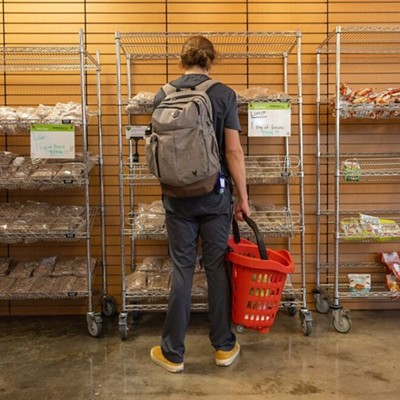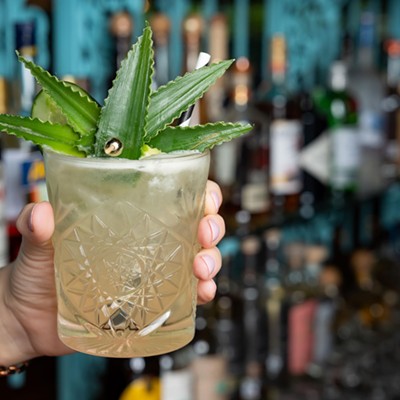Above: Blanc du Bois grapes from the 2010 harvest at the Cruz de Comal Winery in the Texas Hill Country.
To tell the story of winemaking in Texas today, we need to start with what happened in California back in the 1970s and the way wine has been marketed historically in the U.S.
When I was a child growing up in California during the early years of the "Me Decade," wine wasn't part of the fabric of our lives the way it is today. Back then, the future of wine had yet to be written in the U.S. and there were a handful of powerful winemakers in Northern California -- like Gallo and Mondavi -- who were determined to fold wine into the daily culinary routines of ordinary Americans. Taking their cue from the British, they looked to France for their model for fine wine, namely, Bordeaux and Burgundy. As a result, three grapes, more than any other, would define winemaking in our country: Cabernet Sauvignon and Merlot from Bordeaux and Chardonnay from Burgundy.
Unlike the fickle cold weather climate of its European models, conditions in Northern California offered grape growers relatively consistent weather for the production of fine wine. Ambitious Californian winemakers banked on the Golden State's generous sunshine and moderate summertime rainfall as they envisioned a new generation of wine drinkers to whom they could market their products. And their gamble paid off: Today, "Cab" and "Chard" are part of our nation's workaday vocabulary and Merlot has become a cinematic punchline.
When the boom of the 1990s inspired a new generation of winemakers across the U.S., they generally followed the Californian model -- in part because they, too, saw France as the apotheosis of fine wine, and in part because American consumers had been conditioned to ask for Cab, Chard, and Merlot when ordering wine. And in Texas, people planted... yep, you guessed, it: Cab, Chard, and Merlot.
Few stopped to consider the fact that these grapes fare best in cold-weather climates, as in Bordeaux and Burgundy. Even sun-drenched California struggles to vinify these grape varieties without "corrective measures" in the cellar. As I wrote in last week's post about Texas Wines and the Final Frontier, acidification (i.e, the addition of acid to wine) is widely embraced in Texas, even for a consumer base that generally prefers wines with low acidity (in order to achieve balanced levels of acidity, grapes need a prolonged growing season with cool evenings; in hot climates, the grapes "cook" on the vine before achieving the desired acidity). As one Texas winemaker told me, "when people ask me if I acidify my wines, I tell them, 'this is Texas.'"
But there are a few courageous Texan winemakers who have planted grapes that you may have never heard of, like Blanc du Bois. I can't emphasize courageous enough: Blanc du Bois growers face enormous challenges in marketing their wines to a trade that has become complacent with easy-to-sell standbys like the usual suspects.
In a recent blog post, leading Texas wine expert Russ Kane called Blanc du Bois "Texas's own wine," adding that "it's time to be proud of it!"
Blanc du Bois is a hybrid grape that was developed by researchers in Florida who sought to create a variety resistant to Pierce's Disease, a bacterium that afflicts grape vines. (See Russ' post for the variety's lineage and see also this University of Florida profile.) Not only is it resistant to Pierce's Disease, it also performs well in hot climates like Texas, delivering natural acidity where other grapes cannot.
Raymond Haak was among the first to plant Blanc du Bois in Texas, and I enjoyed his 2010 vintage. "Genuine acidity and white fruit flavors, balanced alcohol [at 12 percent according to the label]" were my notes when I tasted it a few weeks ago with Russ and Sean Beck, wine director at Backstreet Café, who also seemed impressed with the wine.
I've also tasted excellent Blanc du Bois by Lewis Dickson, an ex-criminal defense attorney who gave up a wildly successful career in Houston to build the Cruz de Comal Winery in the Texas Hill Country.
These wines are not easy to find, but they are worth seeking out (and because of the winemakers' connection to the city, Houston is probably the easiest place to find them). They are testament to the fact that Texas can produce wines that don't have to be "corrected" in the cellar. I'll drink to that!
Follow Eating Our Words on Facebook and on Twitter @EatingOurWords






